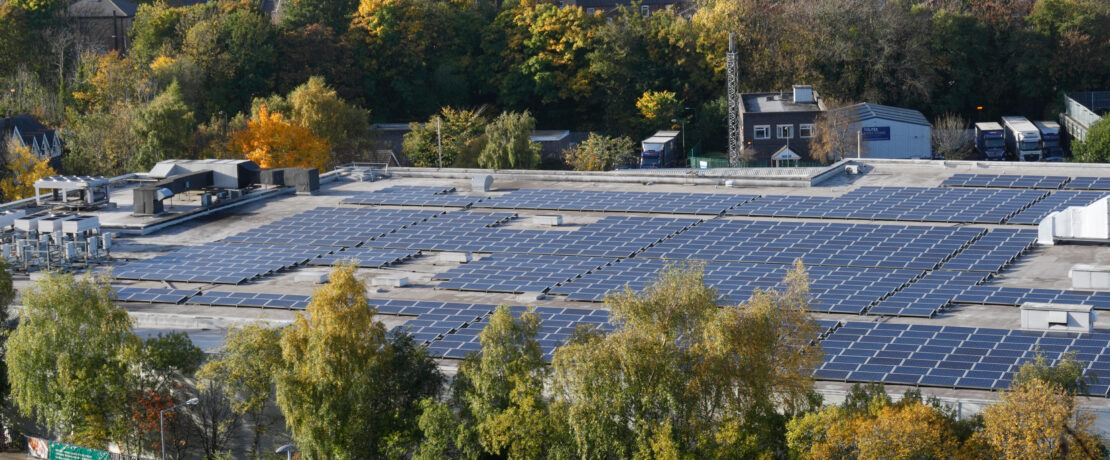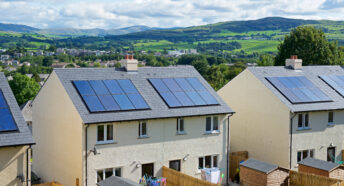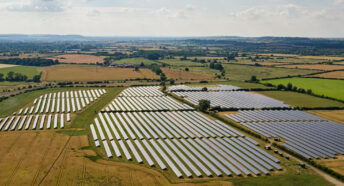Three things we want to see from the government’s Solar Roadmap
The government’s forthcoming Solar Roadmap is a central part of its 2030 clean power mission, aiming to significantly expand solar energy capacity as part of its drive towards homegrown renewable energy. We want to see the government launch a rooftop solar revolution on homes, warehouses and car parks, along with a plan to protect our most productive and beautiful countryside from mega-solar.
As we reach the end of the warmest, sunniest spring on record, the effects of climate change are becoming ever clearer. Extreme and unpredictable weather is putting pressure on the countryside, from the natural spaces we cherish to the farmland that feeds us. The government needs to act with urgency and ambition to deliver clean, sustainable energy.
What is the Solar Roadmap?
The Solar Roadmap is a key part of the government’s mission to deliver clean power by 2030. Its goal is to dramatically scale up solar energy in the UK, aiming for up to 47GW of generation capacity by 2030 – more than double today’s 18GW.
Although we don’t yet know exactly what the roadmap will contain – or even what format it’ll take – we can make some educated guesses.
We expect it to set out plans for a rapid expansion of solar capacity, alongside the grid upgrades needed to support it. It’s also likely to include an implementation plan (how they’re going to do it). This could involve streamlining the planning system to fast-track solar development. We’re also anticipating detail on supply chains, skills, and job creation. It’s going to take a large, skilled workforce to meet the scale of this challenge.
What do we want to see in the roadmap?
In 2023, we called on the government to kickstart a rooftop solar revolution. We clearly got through, because Ed Miliband used our own words and promised the very same last year. Our report showed that there is enough roofspace to meet much more than half of our solar energy targets. Beyond that, we know that other countries are leading the way, massively boosting their solar generation on roofs and wasted space.
It’s time for Ed Miliband to stick to his word and deliver on his promise. Now we’re into the detail, we’ve made our asks much more specific. Here’s what we want to see from the government’s solar roadmap.
1. Power up our homes
We’ve already secured a campaign win with the government now planning for solar panels to be fitted on all new-build homes in England by 2027. The government needs to deliver on these plans, and include affordable and social rent homes too. Rooftop solar cuts bills as well as carbon.
And we want to see meaningful steps to support and empower people to transform their homes into clean energy powerhouses. That means improving the Smart Export Guarantee (which allows homeowners to sell energy back to the grid) as well improved ‘Power Purchase Agreements’, which help homeowners get rooftop solar installed for free in exchange for a long-term agreement with a supplier.
The roadmap should also set out plans to streamline the planning process so that people who want to install rooftop solar can do so more quickly and easily.
2. Brighten up big roofspaces
The roofs of warehouses and car parks, along with schools, hospitals and supermarkets, represent a huge amount of wasted space. Retrofitting these large-scale roofs with solar panels will help us meet net zero targets, reduce costs for businesses and allow our countryside to play its vital role as carbon sink, home for nature, and source of our food.
If the government is serious about its ambition on solar, it needs to make use of this huge opportunity. That means supporting businesses with low-cost loans to retrofit domestic, commercial and community rooftop solar. We’re also fully behind reformed planning rules to transform car parks into power stations by fitting them with solar panels.
3. Make best use of finite land
Climate change is the biggest threat to our countryside, but taking climate action shouldn’t come at its expense. We want the government to ensure that the benefits of clean energy aren’t cancelled out by putting it in the wrong place – our most tranquil landscapes and the best places to grow our food. 60% of our best quality farmland is already threatened with flooding – so we need a plan to make sure solar on the ground is properly thought through.
We don’t want to see mega solar farms that swamp and transform the character of rural places, because there is another way to reach our shared clean power goals – let’s get more of that solar on roofs instead.
The only just transition to net zero is one that has empowered communities at its heart, whose voices are heard and whose suggestions are taken seriously. Meaningful dialogue helps deliver clean energy faster; it makes sense for developers as well as communities. It will help to ensure the clean power mission will be a shared national mission.
The solar roadmap should set out plans to protect our best farmland, as well as how it is going to improve community engagement so that people can shape the renewable transition in their area.
Sign our pledge
The countryside holds huge potential to support nature, food security, clean energy, affordable homes, and natural climate solutions.
But that future is under threat. Right now, the government seems more focused on bargain basement ideas than thinking carefully about where infrastructure goes. That’s a short-term approach, and one that risks damaging the very landscapes we rely on.
We’re working with partners, our network — and you — to offer positive, practical, and ambitious solutions. We want a climate response that delivers clean energy while protecting the countryside — our greatest natural asset.
A great place to start? Sign our pledge, calling on Ed Miliband to get smart on solar. We’ll be holding the government to account, pushing them to deliver on their promises and unlock the full potential of rooftop solar.
Tell Ed Miliband to get smart on solar







